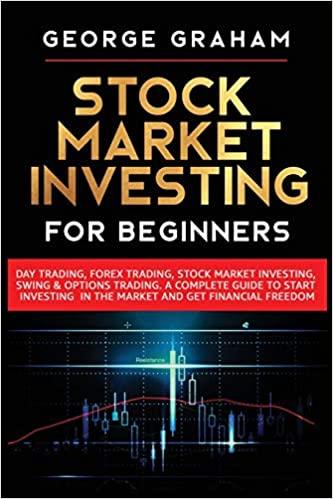Answered step by step
Verified Expert Solution
Question
1 Approved Answer
please help solve this McCoy Group's stock price had been lagging its industry averages, so its board of directors brought in a new CEO, Bradon
please help solve this 
McCoy Group's stock price had been lagging its industry averages, so its board of directors brought in a new CEO, Bradon Lee Lee had brought in Leah Smith, a finance MBA who had been working for a consulting company, to replace the old CFO, and Loo asked Leah to develop the financial planning section of the strategia plan. In her previous job, Smith's primary task had been to help clients develop financial forecasts, and that was one reason Lee hired her. Smith began as she always did, by comparing McCoy Group's financial ratios to the industry averages. If any ratio was substandard, she discussed with the responsible manager to see what could be done to improve the situation. The following data shows McCoy Group's latest financial statements plus some ratios and other data that Smith plans to use in her analysis (Millions of Dollars Except Per Share Data) Balance Sheet, 12/31/2017 Income Statement, Year Ending 2017 Selected Other Data 2017 Cash $ 20 Sales $2,000 Op costs/Sales 90.0% Acts, rec 280 Op. costs (excl. depr.) 1,800 Depr/FA 10.0% Inventories 400 Depreciation 50 Cast Sales 1.0% Total CA $ 700 EBIT $ 150 Receivables Sales 140% Net fixed assets 500 Interest 40 Inventories/Sales 20.0% Total assets $1.200 Protax earnings $ 110 Fixed assets/Sales 25.0% Taxes (40%) 44 Acc. pay & acor/Sales 4.0% Acets pay & accruals $ 80 Net income $ 66 Tax rate 40.0% Line of credit SQ Profit margin (M) 330% TotalCL $80 Dividends $20.0 Sales/Assets 1.67 Long-term debt 500 Add to RE $46.0 Assets/Equity 194 Total liabilities $ 580 Common shares 10.0 Total liability/Total assets 48.3% Common stock 420 EPS $660 Return on assets (ROA) 5,5% Retained earnings 200 DPS $200 Return on equity (ROE) 10.6% Total common agu 5620 Ending stock price 552 80 Target WACC 10.0% Total lab. & equity $1.200 Note McCoy Group was operating at capacity in 2017. It has no preferred stocks and short-term investment Assume that McCoy Group's sale growth rate is 10% from 2017 to 2018 Assume that the firm's 2017 ratios will remain the same in 2017. What is McCoy Group's self supporting growth rate? How the self-supporting growth rate be affected by an increase in capital intensity ratio? McCoy Group's stock price had been lagging its industry averages, so its board of directors brought in a new CEO, Bradon Lee Lee had brought in Leah Smith, a finance MBA who had been working for a consulting company, to replace the old CFO, and Loo asked Leah to develop the financial planning section of the strategia plan. In her previous job, Smith's primary task had been to help clients develop financial forecasts, and that was one reason Lee hired her. Smith began as she always did, by comparing McCoy Group's financial ratios to the industry averages. If any ratio was substandard, she discussed with the responsible manager to see what could be done to improve the situation. The following data shows McCoy Group's latest financial statements plus some ratios and other data that Smith plans to use in her analysis (Millions of Dollars Except Per Share Data) Balance Sheet, 12/31/2017 Income Statement, Year Ending 2017 Selected Other Data 2017 Cash $ 20 Sales $2,000 Op costs/Sales 90.0% Acts, rec 280 Op. costs (excl. depr.) 1,800 Depr/FA 10.0% Inventories 400 Depreciation 50 Cast Sales 1.0% Total CA $ 700 EBIT $ 150 Receivables Sales 140% Net fixed assets 500 Interest 40 Inventories/Sales 20.0% Total assets $1.200 Protax earnings $ 110 Fixed assets/Sales 25.0% Taxes (40%) 44 Acc. pay & acor/Sales 4.0% Acets pay & accruals $ 80 Net income $ 66 Tax rate 40.0% Line of credit SQ Profit margin (M) 330% TotalCL $80 Dividends $20.0 Sales/Assets 1.67 Long-term debt 500 Add to RE $46.0 Assets/Equity 194 Total liabilities $ 580 Common shares 10.0 Total liability/Total assets 48.3% Common stock 420 EPS $660 Return on assets (ROA) 5,5% Retained earnings 200 DPS $200 Return on equity (ROE) 10.6% Total common agu 5620 Ending stock price 552 80 Target WACC 10.0% Total lab. & equity $1.200 Note McCoy Group was operating at capacity in 2017. It has no preferred stocks and short-term investment Assume that McCoy Group's sale growth rate is 10% from 2017 to 2018 Assume that the firm's 2017 ratios will remain the same in 2017. What is McCoy Group's self supporting growth rate? How the self-supporting growth rate be affected by an increase in capital intensity ratio 
Step by Step Solution
There are 3 Steps involved in it
Step: 1

Get Instant Access to Expert-Tailored Solutions
See step-by-step solutions with expert insights and AI powered tools for academic success
Step: 2

Step: 3

Ace Your Homework with AI
Get the answers you need in no time with our AI-driven, step-by-step assistance
Get Started


